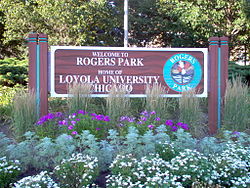
Ecce Homo is a statue of Jesus during his trial after being imprisoned by the Romans. The statue's title, Ecce Homo, is an allusion to the famous proclamation by Pontius Pilate, "behold the Man." The statue, made entirely of carved wood, depicts Jesus in a horrific state of suffering and anguish. Although its creator remains anonymous, Ecce Homo is believed to have been carved in Spain sometime around the year 1600 AD.
Contents
- Biblical context
- Move to Chicago
- Loyola University Museum of Art
- History
- Possible connection to the Council of Trent
- References
- Further reading
Like many forms of Baroque era art, the focus of this piece comes in the form of an emotional connection with Christ. In the Summer 2010 issue of the Loyola University Magazine, Jonathan Canning explains the artistic technique used by the creator to convey this emotion, "His [Christ’s] skin has been painted to reveal bruising and welts beneath the skin, while small, red glass beads have been set into the sculpture’s open wounds to suggest flowing blood." [1] Additionally, Christ's face has been carved so that he is looking down, with an expression that depict complete misery. It is believed that the artist's aim was to trigger a sympathetic response with the viewer. [2] The pathos attributed to this piece may have been intended to serve as a form of worship in which Christians create an emotional connection with Christ.
